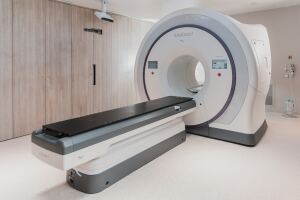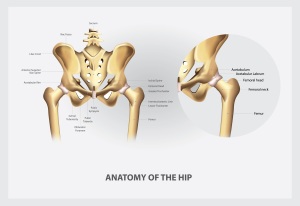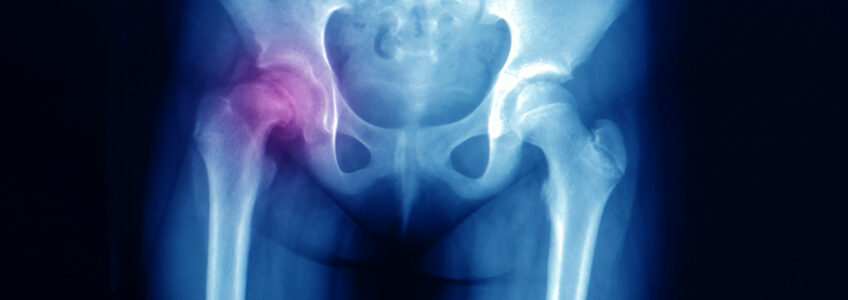Coxa Vara is an orthopedic condition in which the oblique angle of the femoral head (upper part of the thigh bone) relative to the shaft of the thigh bones is less than normal. This anomaly causes hip joint displacement, impacting mobility and daily activities.
This condition can appear either during the child’s development or later in life. In children, Coxa Vara may be congenital or may appear during growth. Congenital refers to the fact that this condition can be present from birth, as a result of abnormal development of the hip bones during the embryonic period.
Some genetic abnormalities or disorders in the development of bone tissues can contribute to the appearance of Coxa Vara in children.
While common in children, Coxa Vara can also arise in adulthood due to bone or joint-affecting conditions like Blount’s disease or skeletal dysplasia. Factors such as obesity or excessive stress on the hip joint due to strenuous physical activities can also contribute to the development of this condition in adults.
CONTENT:
Causes of Coxa Vara
Coxa Vara is a complex orthopedic condition that can be caused by several factors. Here is a more detailed development of the root causes:
1. Congenital factors:
Abnormal development of the hip bones during the embryonic period is considered one of the possible causes of this condition. Some cases stem from genetic abnormalities or disturbances during embryonic development, leading to a congenital form of Coxa Vara with misaligned femoral head and thigh bone shaft angles, deforming the hip joint structure from birth.
2. Injuries or fractures:
Childhood trauma and fractures can directly affect the hip bones and later development of the femoral head. Fractures or severe injuries to the hip or femur can affect the normal growth and development of the bone, leading to changes in the angle of the femoral head relative to the shaft of the femur. These changes can contribute to the appearance of Coxa Vara during the child’s growth and development.
3. Diseases and medical conditions:
There are also certain medical conditions or diseases that can influence bone development and structure, contributing to Coxa Vara. For example, Blount’s disease impacts the tibia and may affect femoral head development. Skeletal dysplasia leads to bone tissue issues, contributing to hip joint deformities like Coxa Vara.
Coxa Vara diagnosis
This condition is diagnosed by an orthopedic doctor or a pediatric orthopedic specialist through multiple steps to confirm its presence in a patient. Here is a more detailed development of the diagnostic process:
Physical examination
The doctor will perform a detailed physical examination to evaluate the function and mobility of the hip joint. This assessment may include:
- Observing the patient’s gait and weight bearing on the affected legs.
- Testing the range of motion of the hip joint to note any restrictions or difficulty in movement.
- Palpation and direct assessment of the hip area to detect possible tender areas or anatomical abnormalities.
Medical imaging
For Coxa Vara diagnosis and severity assessment, imaging tests like:
- X-rays: These provide detailed images of the hip bones and can highlight structural changes in the femoral head and shaft of the thigh bones. Radiographs can help measure the abnormal angle of the femoral head in relation to the thigh bone, providing essential information for diagnosis.
- MRI or CT: Magnetic resonance imaging (MRI) or computed tomography (CT) can provide more detailed and accurate images of the bone structure and soft tissues around the hip joint. These techniques can be useful to assess anatomic changes and provide a broader perspective on the condition.

Therapeutic Options
Treatment options for this condition depend largely on the severity of the condition and its impact on hip joint function. In general, treatment can range from non-surgical options for mild to moderate cases to surgery for severe or progressive cases.
Non-surgical treatment
- Physical therapy and specific exercises: Physical therapy and tailored exercises may aid mild to moderate Coxa Vara, strengthening hip muscles and enhancing mobility. These exercises are designed to increase flexibility, improve muscle strength, and correct muscle imbalances that may be contributing to Coxa Vara symptoms.
- Assistive devices: Sometimes the use of assistive devices such as crutches or braces can help reduce pressure on the hip joint and relieve discomfort during movement.
Surgery
- Osteotomy: Surgery may be needed for severe cases to correct femoral head malalignment or thigh bone alignment. Osteotomy corrects femoral head angle by controlled bone cuts.
- Hip reconstruction: In some severe cases, where Coxa Vara is associated with other hip joint conditions, joint reconstruction surgery may be necessary to restore the function and stability of the joint.

Prognosis and Recovery
The outlook and recovery for Coxa Vara patients varies depending on the severity of the condition and the treatment applied. In the case of surgery, the recovery period may require extensive physical therapy to restore strength and mobility in the hip joint.
Conclusion
This orthopedic condition can affect the quality of life and functionality of the hip joint. Early diagnosis and appropriate treatment are crucial to managing this condition and preventing long-term complications. Seek evaluation by an orthopedic specialist for personalized treatment guidance.


